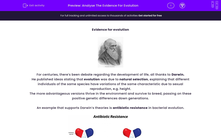Evidence for evolution
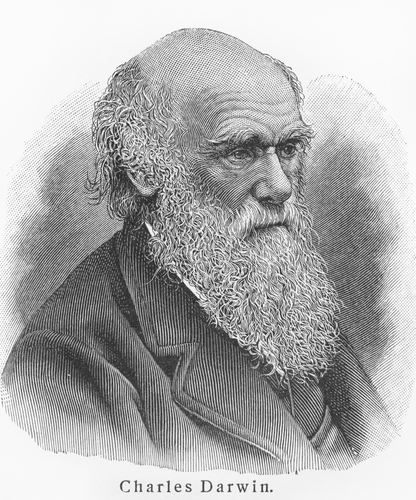
For centuries, there’s been debate regarding the development of life, all thanks to Darwin.
He published ideas stating that evolution was due to natural selection, explaining that different individuals of the same species have variations of the same characteristic due to sexual reproduction, e.g. height.
The more advantageous versions thrive in the environment and survive to breed, passing on these positive genetic differences down generations.
An example that supports Darwin’s theories is antibiotic resistance in bacterial evolution.
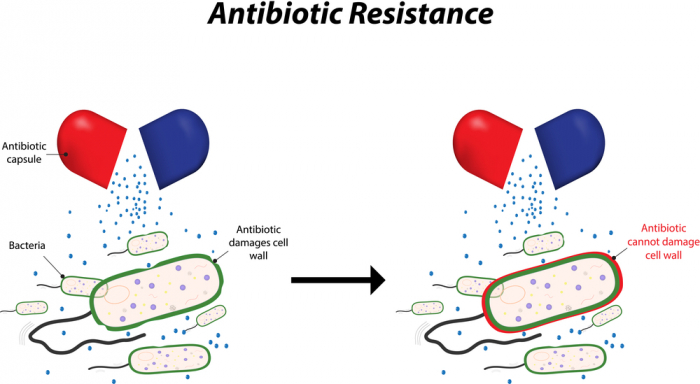
Bacteria reproduce fast and the constant turn over of DNA leads to mutations and new strains of bacteria, some of which can’t be killed by certain antibiotics like penicillin.
This is a demonstration of natural selection: advantageous mutations occur and help the bacteria to survive by resisting the deadly antibiotic, going on to multiply and pass on these variations.
Evidence for human evolution
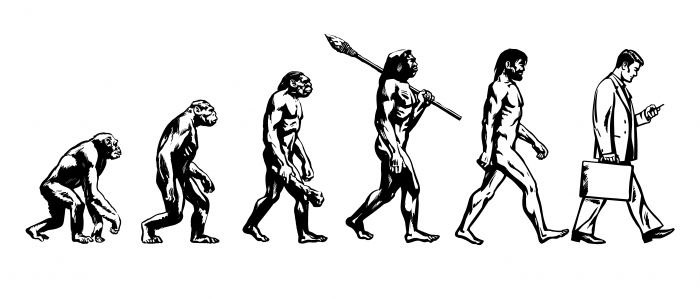
Human evolution was also proposed by Darwin to be the result of natural selection, believing that all organisms ultimately originate from simpler beings.
We can prove this using fossils, which are preserved imprints or remains of organisms that were alive millions of years ago. Archaeologists have used these fossil records to develop evidence for human evolution, primarily with two key discoveries of the lovely African ladies, Arid and Lucy.
Arid is our older lady, being a female fossilised human-like skeleton from 4.4 million years ago, her bones showing her ability to walk despite very long arms and toes. Her feet actually help to suggest that humans and chimpanzees didn’t evolve together.
Lucy is slightly younger, at 3.2 million years old, and is another African fossilised skeleton that seems human-like, with suggestions of an upright posture and foot bones similar to modern-day humans.
Also, more evidence was provided by the Leakeys, a scientist couple who discovered fossils from 1.6 million years ago, greatly resembling modern-day humans - even more so than Arid and Lucy.
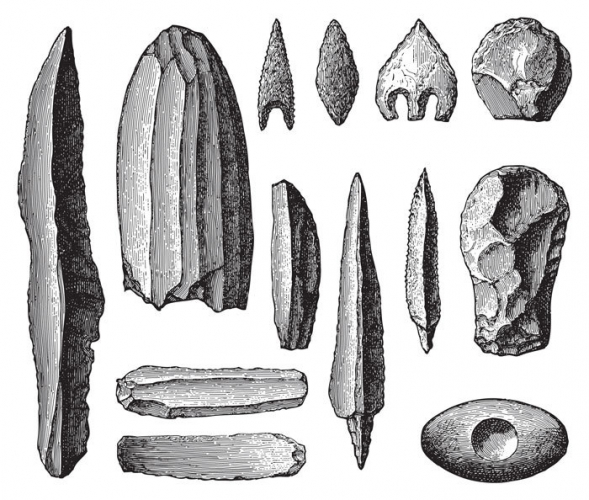
Another sign that we have evolved over time is the discovery of stone tools - from flint hand axes from 2.5 million years ago, to 10,000 year-old arrowheads.
However, all dates are estimates as scientists rely on dating artefacts from the environment they were found in - basically, the tool is considered as old as the rock around it!
More modern techniques, like radiocarbon dating, can also be performed to analyse elements in the tool for more advanced analysis, such as the amounts of iron or potassium.
From five kingdoms to three domains using genetic analysis
To organise the information gathered from fossils and living organisms, classification systems were designed to categorise beings based on their characteristics.
An early model was the seven group Linnaean system designed by Carl Linneaus, placing organisms in gradually smaller and more specific groups: 1. Five main Kingdoms, 2. Phylum, 3. Class, 4. Order, 5. Family, 6. Genus, 7. Species.
However, while the Linnaean system relied on human judgement, scientific advances have enabled us to update methods of classification by allowing scientists to document more details that they can use now to compare organisms, even down to the genetic level!
Genetic analysis highlights DNA base sequences we can use to contrast the relations between beings. For example, the realisation that coding and non-coding DNA were present in varying amounts in different organisms was used by Carl Woese to propose the three domain system including Eukaryotes, Bacteria and Archaea.
Now let's move on to try some questions on all of this.

